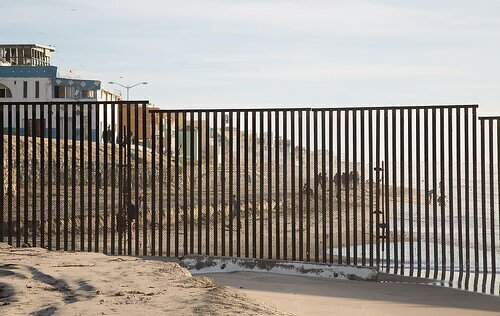During President George W. Bush’s term, a trial version of a “smart” border wall was built along the U.S. border by Raytheon. This idea resurfaced in the 2017 and 2018 discussions about putting in a smart border wall along the U.S. border instead of the classic, solid walls Trump supporters have called for.
The concept was simple. Build a network of open pylons loaded with sensors. The sensors will detect humans while still allowing animals to freely pass. It won’t look as ugly, informs us when drug runners and illegal aliens enter, and yet permits those with legal authority to cross like locals and law enforcement to cross at any point.
The project built in the early 2000s failed on multiple accounts. Sensors can malfunction and be fooled. I don’t recall the specific technical failures from a decade ago when some of my coworkers worked on the project, and it doesn’t matter since the entire project was more for show than proof of concept. Then there’s the fact we’re facing technology that’s advanced rapidly in the past decade. Drones today can go over and around it, while “El Engineer” working for drug lords took one from the history books and built a trebuchet to launch loads over walls.
Worse yet, even when it works, it doesn’t matter. Border pylons that sense illegal border crossings are irrelevant if you don’t have enough agents to stop the influx. And as we’ve seen in multiple parts of the world, these barriers are no barrier to mob swarm tactics that take down even solid walls unless law enforcement is willing and able to use every means necessary to stop it. In short, the “smart walls” full of sensors do nothing to stop a literal invasion of illegal immigrants or small groups we don’t have the resources to intercept. Nor would smart walls matter if someone detonated an EMP nearby, managed to shut off power or found other ways around it like threatening legitimate local travelers to carry items for them. Corrupt border patrol agents are already a known issue. This is why only a real, solid wall that is difficult to get through except at controlled access points would work.
What works best? The solid, terrorist proof walls U.S. defense contractors have built for other nations. The irony of this discussion is that Raytheon has built Islamic terrorist proof walls along Saudi Arabia’s and Jordan’s borders. They’ve built tall chain link fences with guard towers, ditch networks that prevent people from driving a truck through the barrier, and sensors that reinforce what the observers could do. These terrorist (and refugee proof) walls come with advanced sensors to detect approaching vehicles, as well has have design elements to stop them.
The Jordan border wall built by Raytheon was almost 300 miles long. Saudi Arabia’s wall along its Iraqi border is around 600 miles long. Raytheon bid on but did not win the contract to build the Saudi Arabian wall around Yemen, too. That’s an 1100 mile long wall. That’s close to half the length of the U.S. – Mexico border. That they decided to drop off the vendor list for providing the same security for their own nation is a disappointment and a disgrace. However, the solid designs they’ve demonstrated in other nations can and should be replicated here for the same reasons they were implemented abroad – the tried and true classic designs that are, truly, timeless.
***
Check out Tamara Wilhite’s Amazon Author Page and see her on Hubpages.
Photo by Tony Webster 



Comments
Leave a Reply